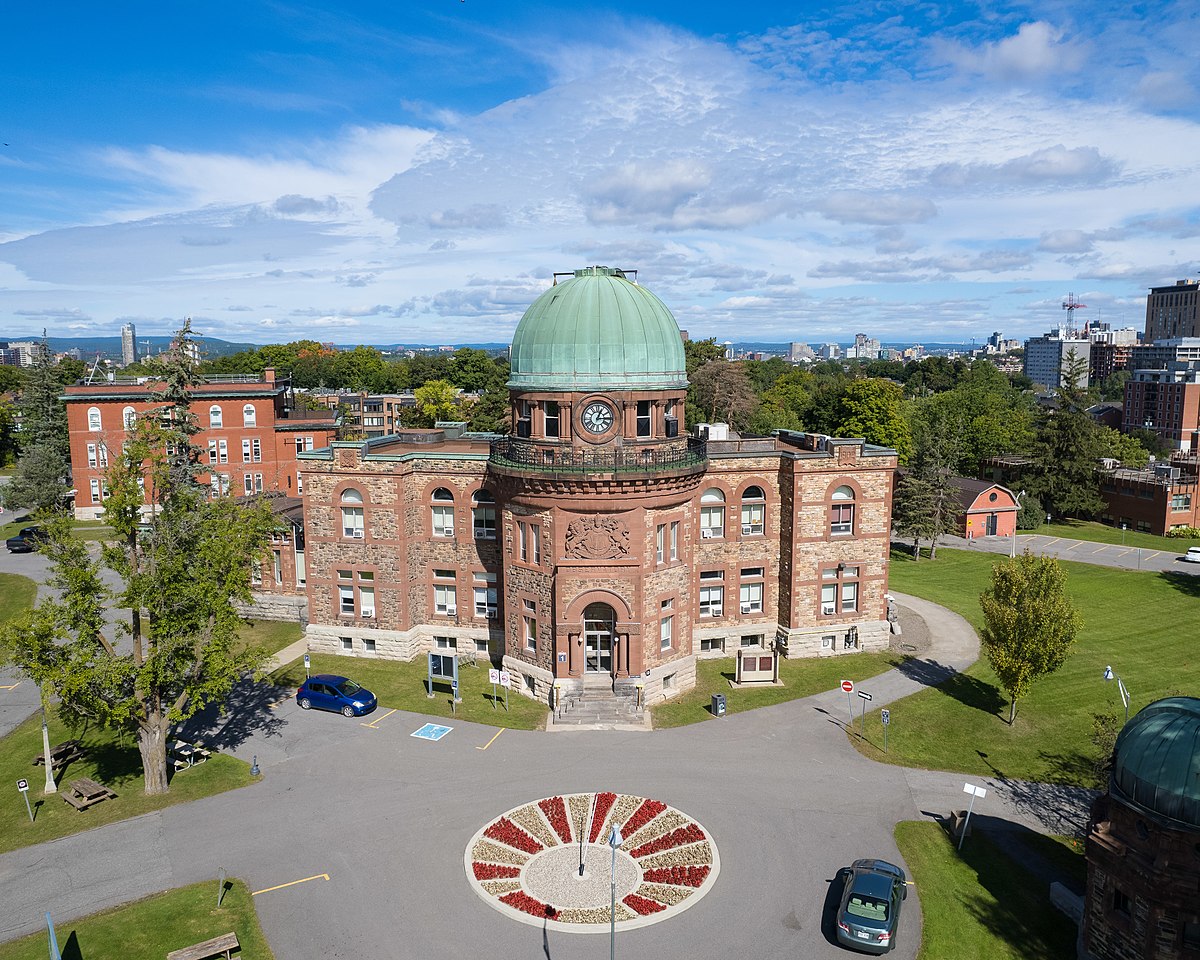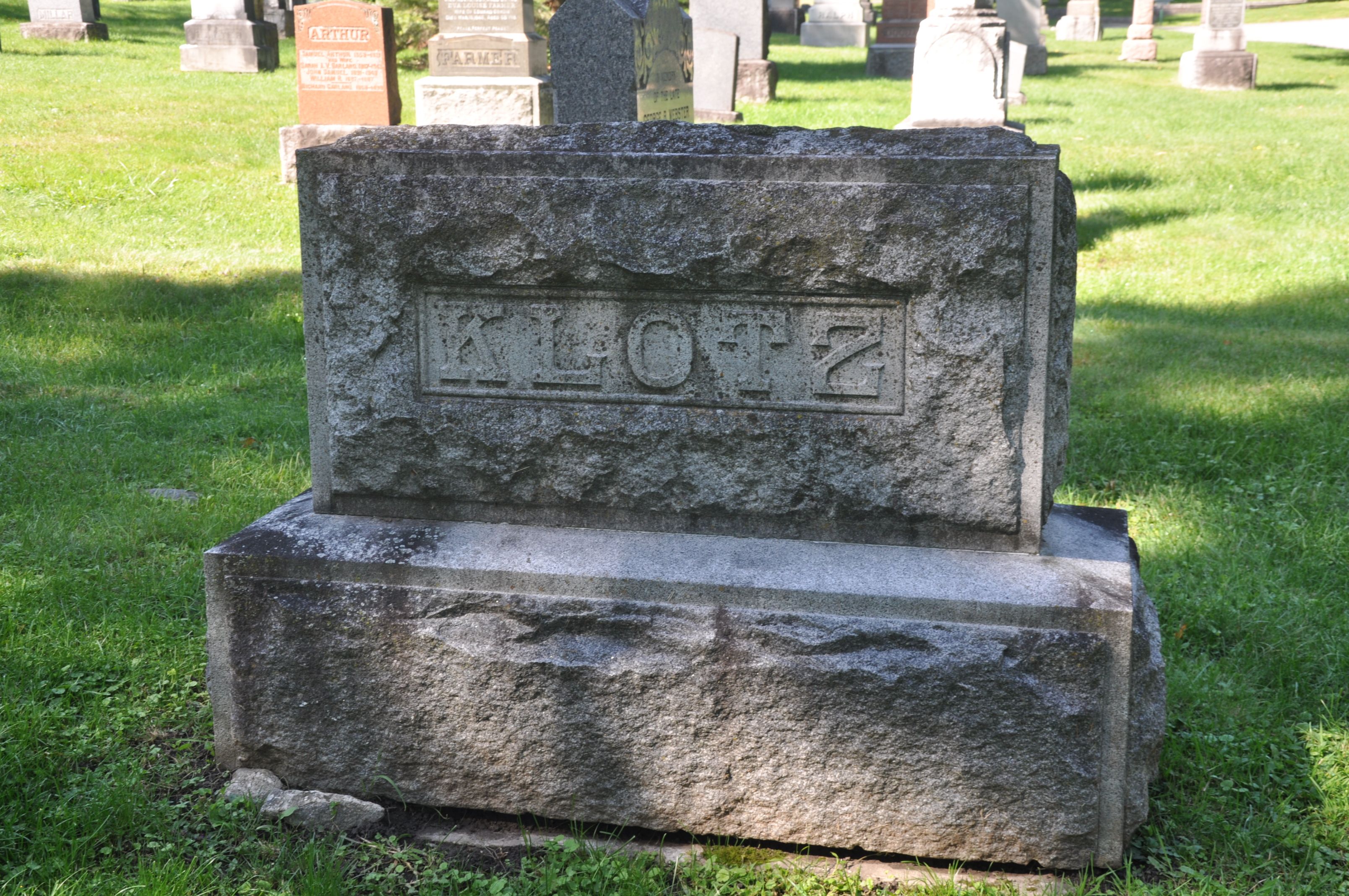
Surveyor, Astronomer and Explorer: Otto Julius Klotz
Otto Julius Klotz -
Section 41, Lot 55 NE
Born in Preston, Canada West on March 31, 1852, Otto Klotz received his early education at Galt Grammar School, and in 1869 entered the University of Toronto on a scholarship. He was dissatisfied with its training in science, though, so he transferred in 1870 to the University of Michigan in Ann Arbor.
While there, he studied with astronomer James Craig Watson. Klotz graduated in 1872 with a degree in civil engineering, and returned to Preston to work as a surveyor. He quickly obtained his qualifications as a dominion land surveyor and in 1877, the more coveted designation of dominion topographical surveyor.
Klotz joined the Department of the Interior in 1879 as a contract surveyor. His first assignments were on the prairies, and in 1884 he was tasked with leading an expedition to search for possible ports on Hudson Bay which could serve as a railway terminus. In the course of executing this task, he explored the Saskatchewan and Nelson rivers to Hudson Bay, making a canoe trip of some 2,000 miles.
In 1885, he began surveying parts of the Canadian Pacific Railway through British Columbia, a task requiring astronomical observations for latitude and longitude to successfully link these surveys to the prairie grid. This trip necessitated his becoming the first man to descend the whole length of the Nelson River. In 1889, the government sent Klotz to Alaska to investigate the supposed American encroachment onto British territory. However, Klotz supported the American claim, and in doing so, lost out on a nomination to the International Boundary Commission in 1892.
The position instead went to William Frederick King, who went on to be named chief astronomer by the Canadian government. Klotz was still well respected, and after King’s appointment the Canadian government requested that Klotz move to Ottawa and supervise a small observatory King had established there. Klotz, who had continued to live in Preston during the winter (when he wasn’t out doing fieldwork) agreed, and moved to Ottawa formally in 1892. He still continued to do fieldwork, though. In 1893-94, Klotz surveyed the area of the Unuk River and the Bradfield Canal in the Alaska panhandle.

In 1896, Klotz formally entered the civil service as a chief clerk and astronomer, where he worked closely with King in organizing the Dominion Observatory in the late 1890s. While it was being constructed, Klotz travelled to the South Pacific from 1903 to 1904 to determine the longitudes of points along the All Red Line (the informal name for the system of electrical telegraphs that linked much of the British Empire), which connected Vancouver with Australia and New Zealand. When he returned to Canada, the observatory was nearly ready.

When King died in 1916, strong anti-German feeling in the midst of war prevented Klotz from receiving his position as chief astronomer. Instead, both the Dominion observatory and the Geodetic Survey of Canada were led by King's former, non-scientist secretary, Wilbert Simpson, for nearly a year and a half. Unhappy with this, in 1917 the entire scientific staff of the department signed a memorandum to the interior minister in support of Klotz, whose was subsequently appointed chief astronomer that September. In 1922, Canada joined the new International Geodetic and Geophysical Union and the International Astronomical Union. Klotz attended the first meetings of both organizations in Rome as one of Canada's official representatives. During his last year in office, heart trouble curtailed his ability to work. Klotz was a strong personality, and had a high opinion of himself and did not suffer fools gladly. Musical interests helped fill his spare time.
He was very dedicated to his work, and was the first president of the Association of Dominion Land Surveyors (1882-86) and was prominent in the formation of the surveyors' associations of Manitoba and Ontario. Klotz also served as president of the Association of Mechanics' Institutes of Ontario in 1884-85. Klotz is also considered the founder of the Carnegie Library, and served as president of both the Canadian Club and the Ottawa Literary and Scientific Society.
He was a fellow of the Royal Society of Canada, the American Association for the Advancement of Science, and the Royal Astronomical Society in England, and served as was president of the Royal Astronomical Society of Canada in 1908, vice-president of the American Astronomical Society in 1920 and president of the Seismological Society of America, also in 1920. Klotz received honorary LLDs from the University of Toronto in 1904 and the University of Pittsburgh in 1916, along with a D.Sc. from the University of Michigan in 1913.
In addition to his official reports, Klotz authored nearly 100 papers and was a gifted speaker on scientific matters. According to his obituary in the Ottawa Citizen, “His public lectures had a breeziness and charm that put him in instant touch with his audiences.”
Klotz died in Ottawa on December 31, 1923.


